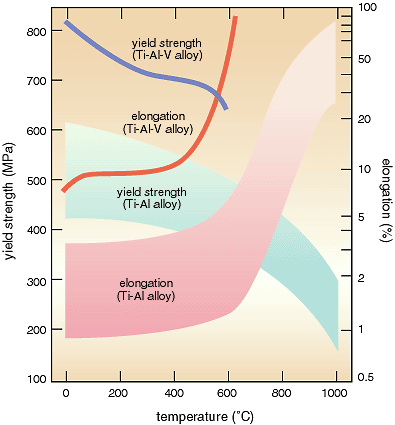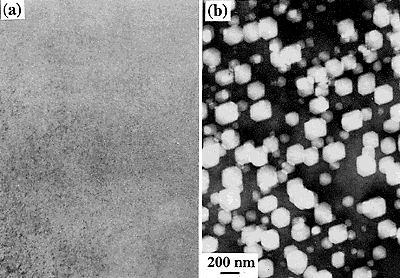Ti-Al alloys are promising materials for many applications such
as aeroplanes, space technology, engines, and turbine parts because
of their large strength-to-weight ratio and good oxidation resistance.
In addition, their application to nuclear materials has been recently
noticed, because the alloys have good elevated-temperature strength,
aqua-corrosion resistance and low neutron-induced radioactivity,
compared with those of conventional nuclear materials like the
austenitic stainless steels. However, the main drawback for their
engineering application is poor ductility though this is a common
problem stemming from the crystal structure of intermetallic compounds.
To improve this situation, a ternary alloy, which was alloyed
Al 40atom% and V 10atom% in the mother material of Ti, was fabricated.
As shown in Fig. 3-9, the alloy fabricated is significantly improved
in yield strength and tensile elongation compared with conventional
Ti-Al alloys: the tensile elongation increased from 3 to 10%,
and the yield strength improved from 500 to 700 MPa.
The effect of the irradiation of the binary alloy is shown in
Fig. 3-10. Many voids, which are symptoms of the deterioration
of material, are observed in stainless steel irradiated by electrons,
but the voids are scarcely observed in the Ti-Al alloy. This study
has significantly accelerated the practical use of Ti-Al alloys. |

